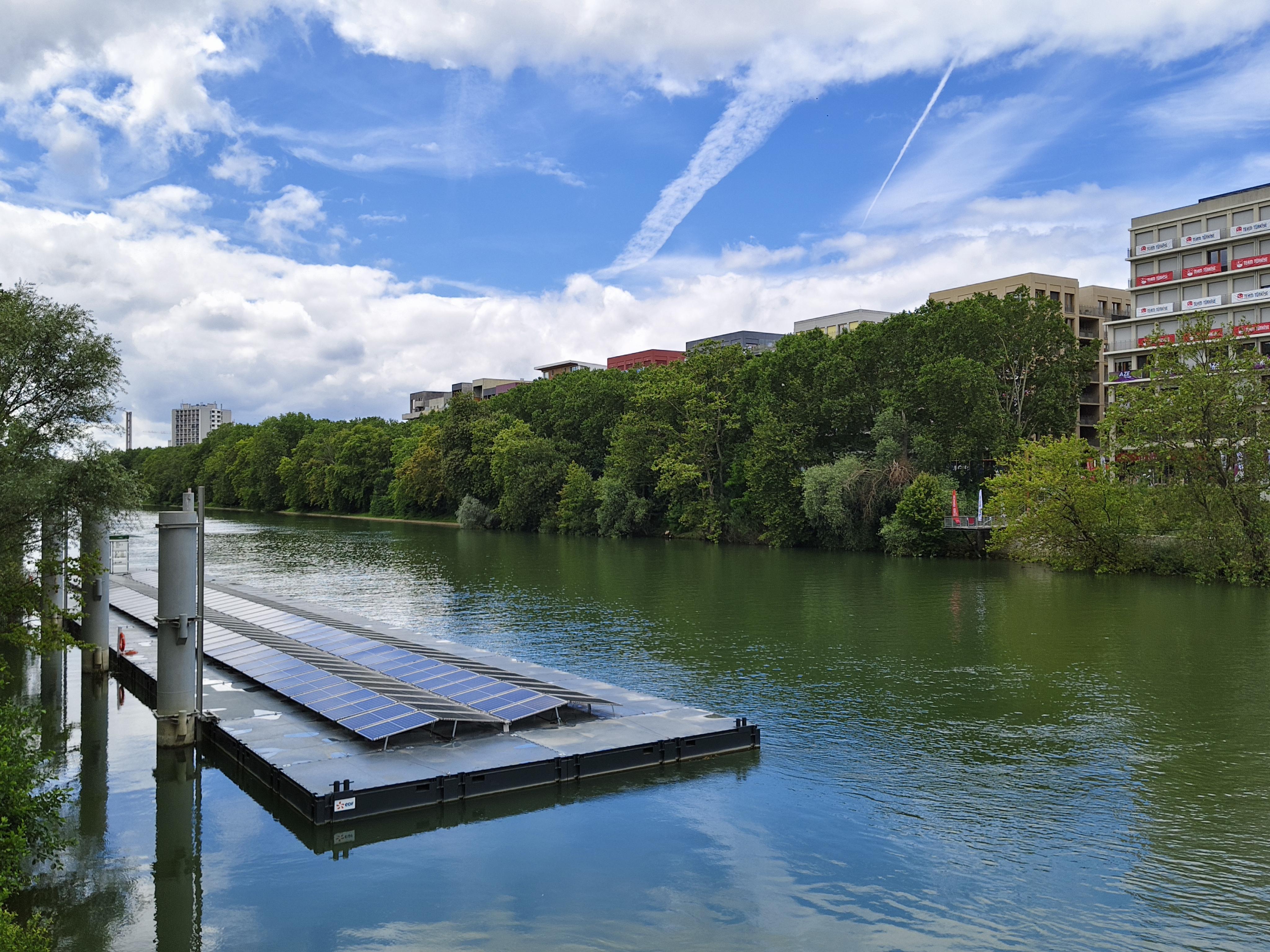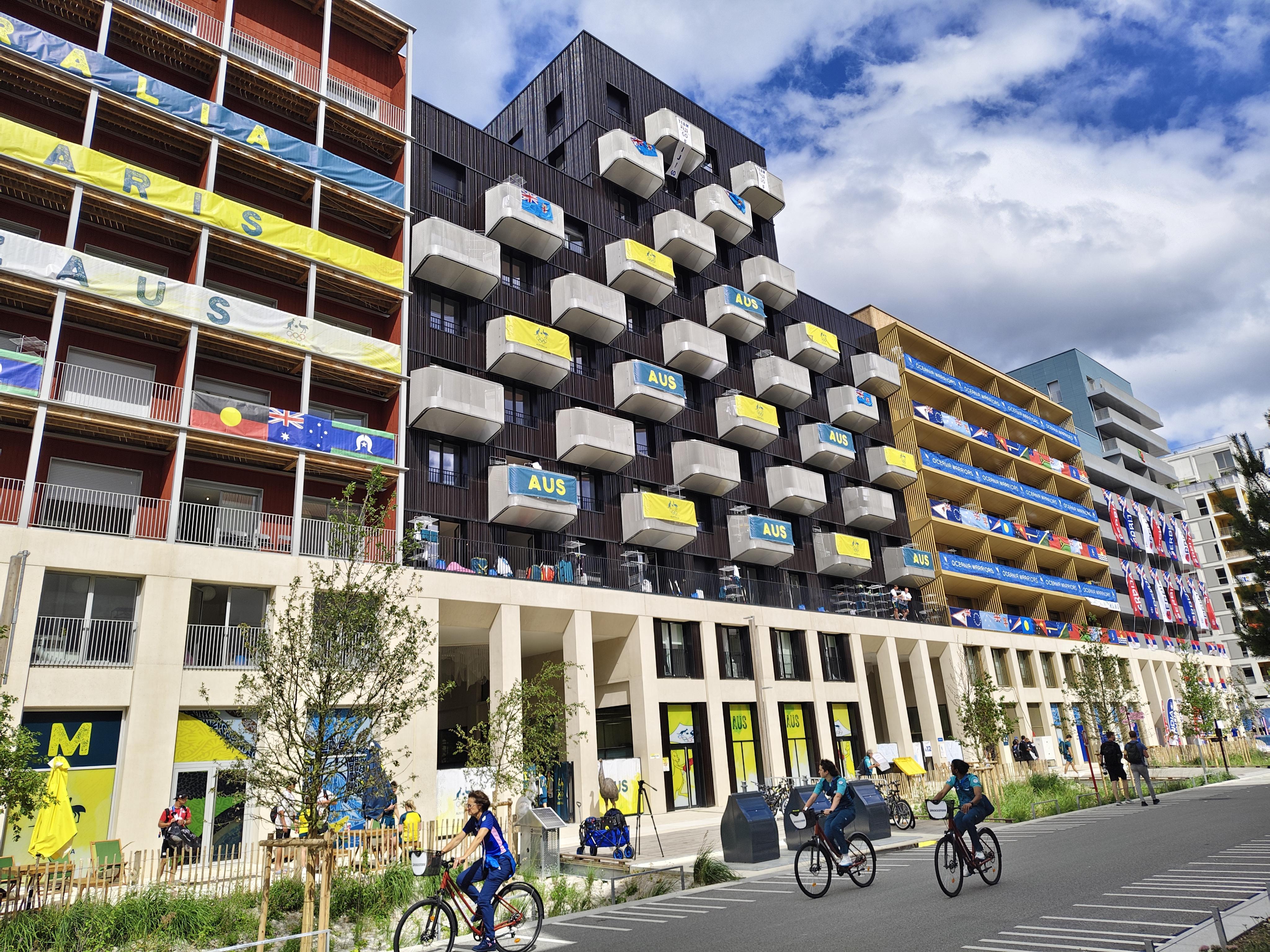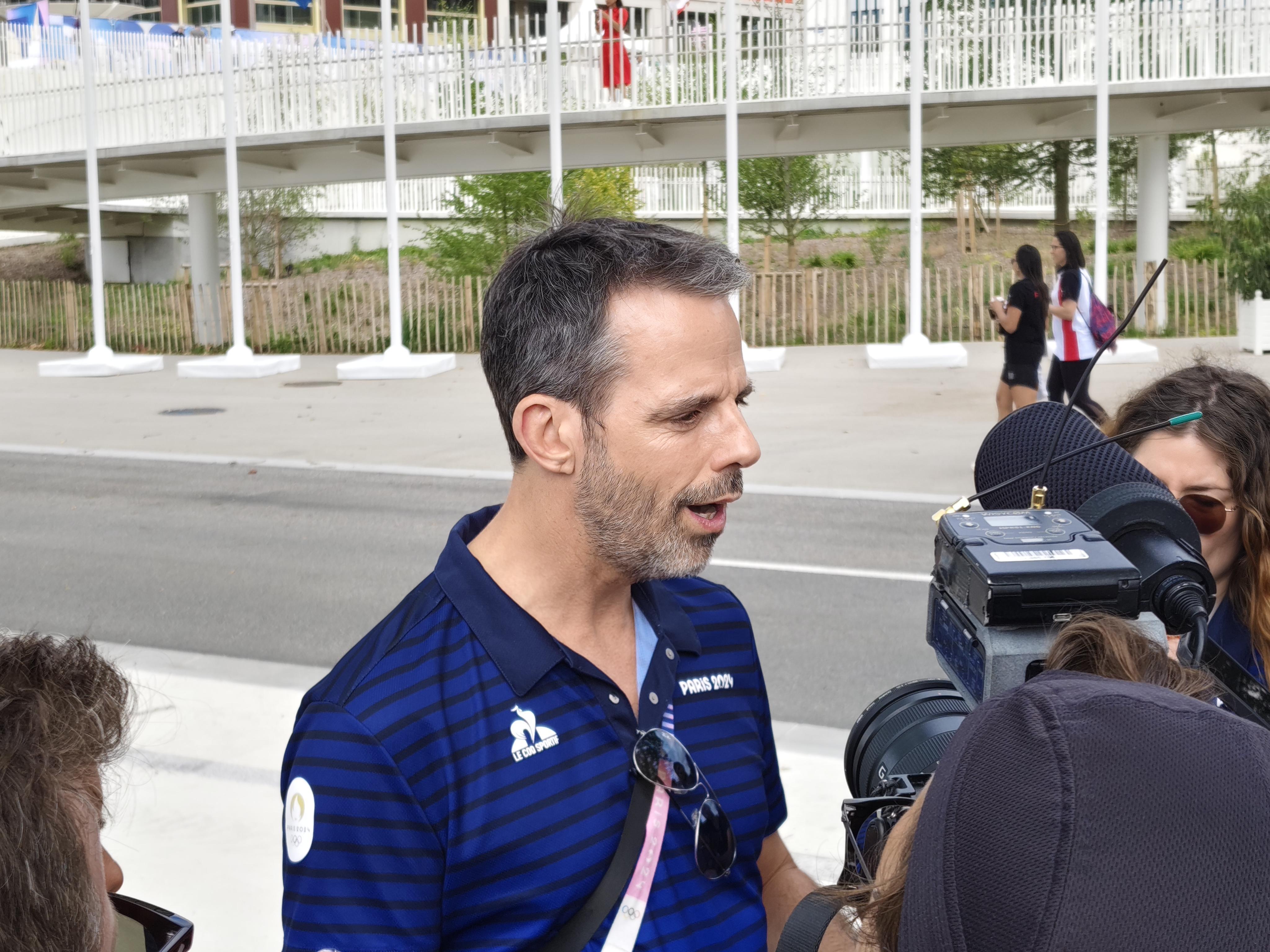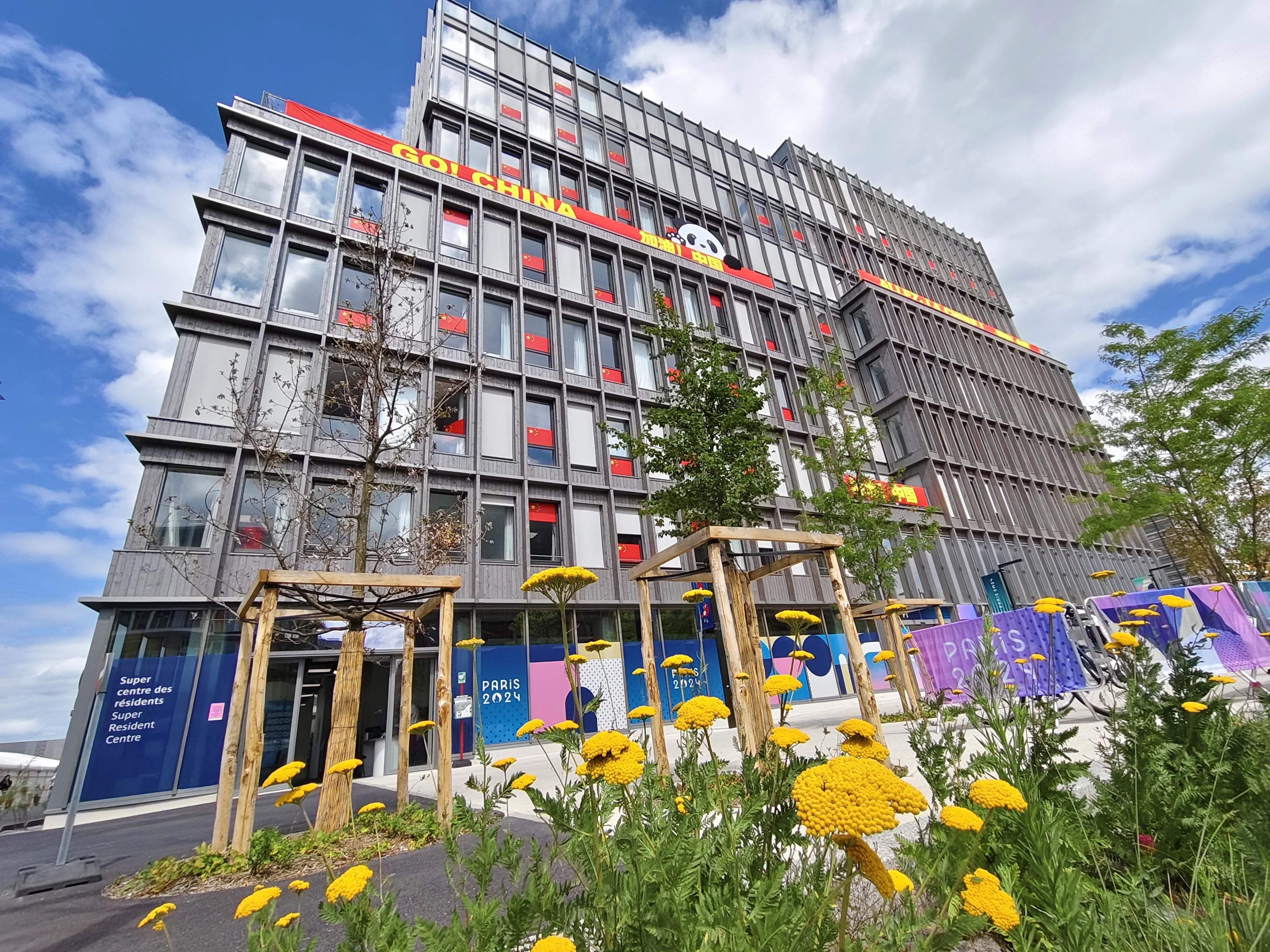

During the preparations for the 33rd Summer Olympic Games (the Paris Olympics), topics such as the Olympic Village's "natural cooling" method, the anticipated extreme heat during the Olympics, and the Seine River's water quality frequently became trending topics. On the afternoon of July 23rd in Paris, the Paris Olympic Village held its first media open day. A firsthand visit by a reporter from Yangcheng Evening News revealed the clear waters of the Seine, the picturesque and comfortable atmosphere of the athlete village, and temperatures that, even during the hottest part of the day, did not necessitate air conditioning.

Located in northern Paris, the Paris Olympic Village spans 52 hectares across the districts of Saint-Denis, Saint-Ouen, and L'Île-Saint-Denis. The village comprises 82 buildings and approximately 3,000 apartments. During the Olympics, it will host over 14,000 athletes and staff.
In the early stages of preparation, discussions about the village's "natural cooling" system replacing air conditioning and concerns over potential extreme heat during the games drew global attention. However, during the on-site visit, the reporter noted that even upon entering the village in the afternoon, the temperature in Saint-Denis was a comfortable 22°C. Words like "comfortable", "cool", and "no need for air conditioning" were commonly heard among the Chinese journalists present.

During the interview, Laurent Michaud, the director of the Paris Olympic Village, reiterated his confidence in the "natural cooling" system. This system is part of a broader approach and involves a water-cooling system that draws 4°C water from wells 70 meters deep at a nearby geothermal plant. This water is circulated through pipes under the floors of each apartment, with thermostats available to adjust the temperature by 2°C either way.

In the athletes' accommodation area, the distinctive façades of buildings housing various national sports delegations drew many journalists to take photos. The building of the Chinese delegation featured bright red Chinese flags on the windows, cheerful panda mascots, and motivational slogans such as "Go China!", creating a vibrant scene.
Previously, the cardboard beds in the athlete apartments had also sparked heated discussions online. During the media open day on July 23rd, reporters had the chance to try replicas of these beds. Contrary to expectations, the cardboard beds offered multiple firmness options. Athletes could choose the firmness that best suited their body type and weight, balancing sustainability and comfort perfectly.
After the Paralympic Games, the Olympic Village will complete its mission. The Paris Organizing Committee will close the village on September 10th and clear all furniture within the following six weeks.
Source:Lingnan on the Cloud
实地探访巴黎奥运村:实时气温22℃,真的不用开空调了!
第33届夏季奥林匹克运动会(以下简称“巴黎奥运会”)筹备期间,奥运村采用“自然降温法”、奥运会期间巴黎将遭遇极端高温、塞纳河水质不达标等相关话题频频冲上热搜。当地时间7月23日下午,巴黎奥运会奥运村举行首个媒体开放日活动。经羊城晚报特派记者实地探访发现,塞纳河碧波荡漾,运动员村风景优美、气温舒适,哪怕是在一天中最热的时段,气温显然都没有达到需要用到空调制冷的地步。
巴黎奥运会奥运村位于巴黎北部,跨圣但尼、圣旺和圣但尼岛三个地区,占地52公顷村内共建成82栋建筑,约3000套公寓。奥运会期间,奥运村将接待超过14000名运动员及工作人员。
在巴黎奥运会前期筹备阶段,“奥运村将采用‘自然降温法’取代空调制冷”“奥运会期间巴黎将遭遇极端高温”等话题成为全世界网友热议的焦点。但在当天的实地考察中,记者曾多次留意实时气温,哪怕是在刚进奥运村的下午,圣但尼的实时气温也只有22℃,“舒适”“凉爽”“真的不用开空调”成了所有同行中国记者口中的关键词。
在当天的采访中,巴黎奥运会奥运村“村长”米歇尔·洛朗再次向记者们表达了对“自然降温法”的信心。据介绍,水冷系统只是奥运村“自然降温法”的一个组成部分,该系统从附近地热发电厂地下70米深的井中获取冷却至4摄氏度的水,并将其输送到每间公寓地板下的管道中,奥运村的每间公寓内都配有温控器,可以让房间的温度降低或升高2摄氏度。
漫步在运动员住宿区,各国体育代表团具特色的驻地大楼外立面吸引无数记者打卡留念,在中国体育代表团驻地大楼外立面,不仅每套公寓的玻璃窗上都贴着鲜艳的五星红旗,憨态可掬的熊猫卡通形象和“加油!中国”的标语也成为住宿区一道亮丽的风景线。
此前,运动员公寓内的纸板床同样成为网友热议的焦点话题,23日的采访活动中,记者们也有机会体验运动员所用纸板床的复制品。和想象中不同,看似简陋的纸板床有多种硬度可以选择。据介绍,每个运动员都可以根据自己的体型、体重需要选取合适的硬度,实现可持续发展和舒适度之间的完美兼顾。
在残奥会结束后,奥运村将正式结束它的奥运使命,巴黎奥组委将在9月10日关闭奥运村,并在随后的6周内清空所有家具。
文、图 | 特派巴黎记者 吕航 苏荇
译 | 赵凡
-
Zhao Weibin: inheriting the intangible cultural heritage of lion dance through art and technology
2024-07-24 23:08:08 -
DATA TALK|GDP exceeds 6.5 trillion yuan: Guangdong's economic data for H1 2024 released
2024-07-24 23:16:24 -
On-site visit to the Paris Olympic Village:the current temperature is 22℃, no need for air conditioning
2024-07-24 23:15:46 -
Poster | Chaoshan Yingge Dance encounters Foshan "La Liga" Football League
2024-07-24 21:38:51






